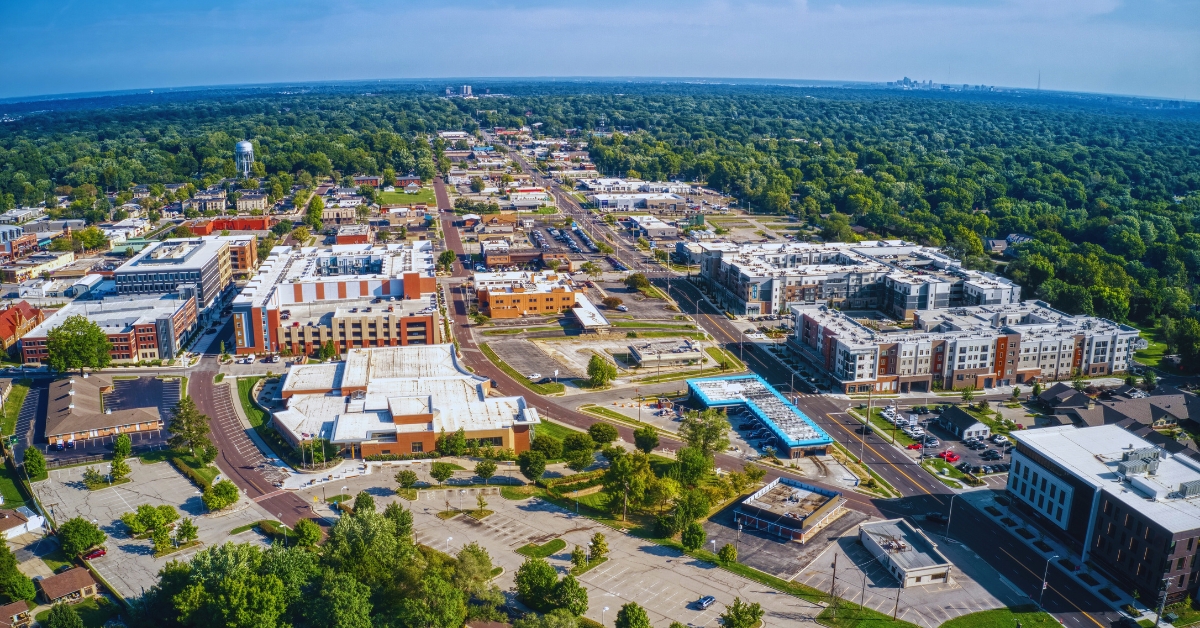Modern life often feels rushed, but some American cities have cracked the code for slower, more mindful living. A comprehensive study by Badeloft USA reveals which urban areas offer the perfect blend of efficiency and tranquility, proving that peaceful living doesn’t require abandoning city amenities.
Badeloft USA analyzed major U.S. cities using seven critical factors: commute times, population density, park accessibility, walkability scores, noise pollution levels, air quality ratings, and happiness indices.
Each metric was weighted based on its contribution to calm, sustainable living, with cities receiving composite scores from 1 to 100.
The research uncovered a striking pattern: every top-performing city maintains average commute times under 22 minutes. This finding suggests that transportation efficiency forms the foundation of slow living, allowing residents more time for personal activities and reducing daily stress.
Cities that combined short travel times with abundant green spaces, manageable density, and clean environments scored highest.
Complete Rankings and Statistics
| City | Commute Time (min) | Population per sq. mile | Parks Accessibility | Walkability Score | Noise Pollution | Air Quality | Happiness Score | Overall Score |
|---|---|---|---|---|---|---|---|---|
| Overland Park | 18 | 2.6K | 70% | 35 | 45 | 55 | 66.9 | 100 |
| Corpus Christi | 18 | 1.8K | 75% | 40 | 49.9 | 67 | 41.4 | 89 |
| Virginia Beach | 21 | 1.8K | 69% | 33 | 45.9 | 56 | 56.9 | 83 |
| Omaha | 17 | 3.4K | 81% | 48 | 49.9 | 35 | 64.3 | 82 |
| Lincoln | 16 | 2.9K | 89% | 44 | 54.9 | 25 | 66.5 | 79 |
| Lexington | 18 | 1.1K | 60% | 34 | 49.9 | 52 | 50.4 | 78 |
| Pittsburgh | 21 | 5.3K | 94% | 62 | 54.9 | 67 | 56.6 | 77 |
| Durham | 20 | 2.4K | 46% | 28 | 45 | 63 | 60.5 | 74 |
| Nashville | 22 | 1.4K | 44% | 98 | 49.9 | 39 | 49.2 | 72 |
| St. Petersburg | 21 | 1.8K | 78% | 43 | 45 | 26 | 55.2 | 67 |
Overland Park, Kansas, claims the top position with a perfect score of 100. The city delivers 18-minute commutes while maintaining comfortable density at 2,600 residents per square mile. Seventy percent of residents can walk to parks, and the city maintains low noise pollution levels alongside solid happiness ratings.
Also Read: Jon Jones rejected massive UFC offer to avoid fighting Aspinall
Corpus Christi, Texas, secures second place through coastal tranquility and efficient planning. Matching Overland Park’s 18-minute commutes, the city features the lowest density among top performers at 1,800 people per square mile. Three-quarters of residents enjoy close park access, while excellent air quality enhances the living experience.
Virginia Beach, Virginia, ranks third by balancing seaside charm with controlled development. Residents navigate 21-minute commutes through sparse density that preserves public spaces. With 69% park accessibility and moderate noise levels, the city creates ideal conditions for healthy, relaxed living.
Nebraska emerges as a slow living powerhouse, placing two cities in the top five. Omaha, the state’s largest city, offers 17-minute commutes and provides 81% of residents with nearby parks. Strong walkability scores and low noise pollution contribute to its fourth-place ranking.
Lincoln, the state capital, achieves fifth place with the shortest commutes in the top 10 at just 16 minutes. The city leads in park accessibility with 89% of residents living within walking distance of green spaces. Lincoln also posts the lowest noise pollution levels and exceptional happiness scores.
The remaining cities demonstrate that slow living transcends geography. Lexington, Kentucky, showcases the benefits of low density living with 1,100 residents per square mile. Pittsburgh, Pennsylvania, leads the nation in park access at 94% while maintaining excellent walkability.
Durham, North Carolina, balances moderate density with outstanding air quality. Nashville, Tennessee, proves entertainment hubs can support peaceful living through superior walkability and low noise levels. St. Petersburg, Florida, rounds out the top 10 with strong park access and quiet coastal neighborhoods.
The Future of Urban Planning
The study reveals that slow living opportunities exist across diverse American landscapes when proper planning prioritizes resident well-being. From Kansas suburbs to coastal cities, the data shows that smart infrastructure design can create environments where people have time for what matters most. Short commutes remain the common thread, suggesting that transportation efficiency is fundamental to quality urban life.


